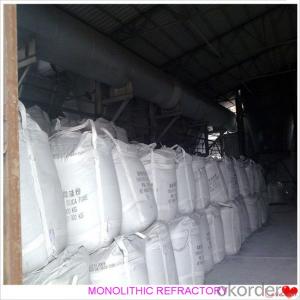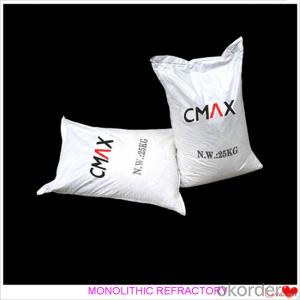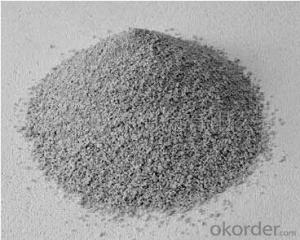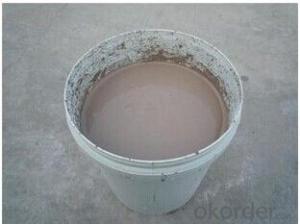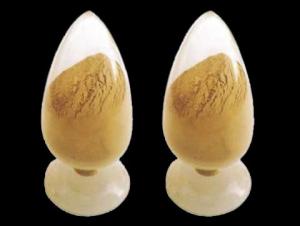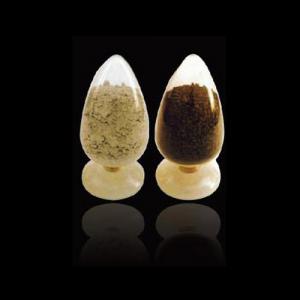Low Weight Castable For Fireplace and Industrial Furnace in Iron and Steel
- Loading Port:
- China main port
- Payment Terms:
- TT OR LC
- Min Order Qty:
- 1000 kg
- Supply Capability:
- 3000000 kg/month
OKorder Service Pledge
OKorder Financial Service
You Might Also Like
Low Weight Castable For Fireplace and Industrial Furnace in Iron and Steel
Product Description:
Low weight castable is manufactured according to international standards. The product is famous for its excellent abrasion resistance and low thermal conductivity. Further, these can be provided in different specifications as required by the clients. The Low weight castables are used high purity raw materials and additives as the main material, and made of under superfine powder adding technology.
Product Advantages:
The material has excellent structural stability and air tightness, and has high physical and chemical properties, also has a fine working ability.They should be used with the same material products.
Product Applications:
For feature of Low weight castable, they have excellent abrasion resistance, thermal shock resistance, high-temperature resistance, anti-corrode and have high intensity.
Designed for refractory lining of blast furnace iron and slag runners, skimmers and soon
They can be used in troughs of small and mid size BFs and in all positions of the troughs where fast tapping is required.
Product Specifications:
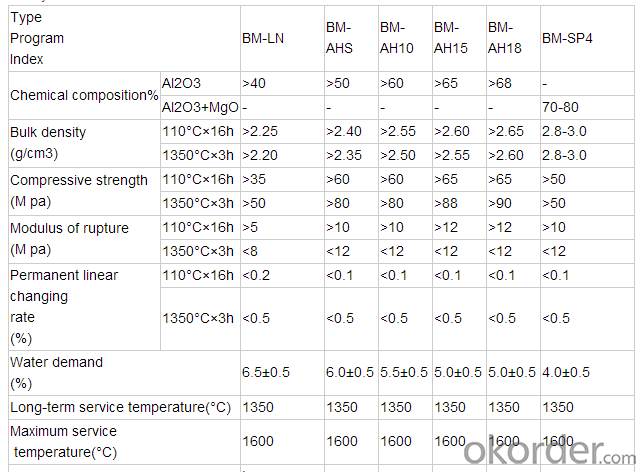
FAQ:
1. How you can control your quality?
For each production processing, we have complete QC system for the chemical composition
and Physical properties. After production, all the goods will be tested, and the quality certificate
will be shipped along with goods.
2. What's your delivery time?
It usually needs about 20days- 45 days after receiving the deposit.
3. Do you provide free samples?
Yes, we can provide a free sample for testing, If we have sample in stock,
The quantity based on the material type, The buyer should bear all the shipping costs.
4. What's your payment terms?
We can accept 30% deposit, 70% balance before shipment for ordrs over $ 2000.
5. Can we visit your Company?
Yes, certainly. You are very welcome to China and we will be honored to have a customer and friend.
Product Picture:
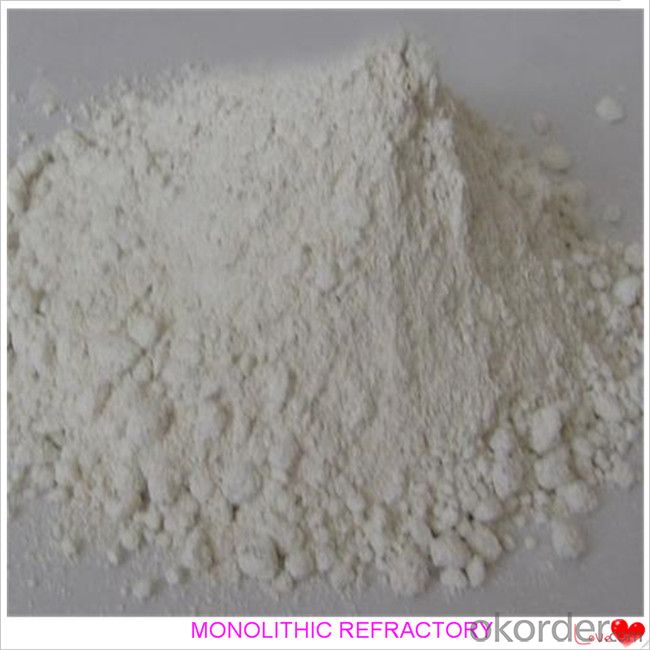
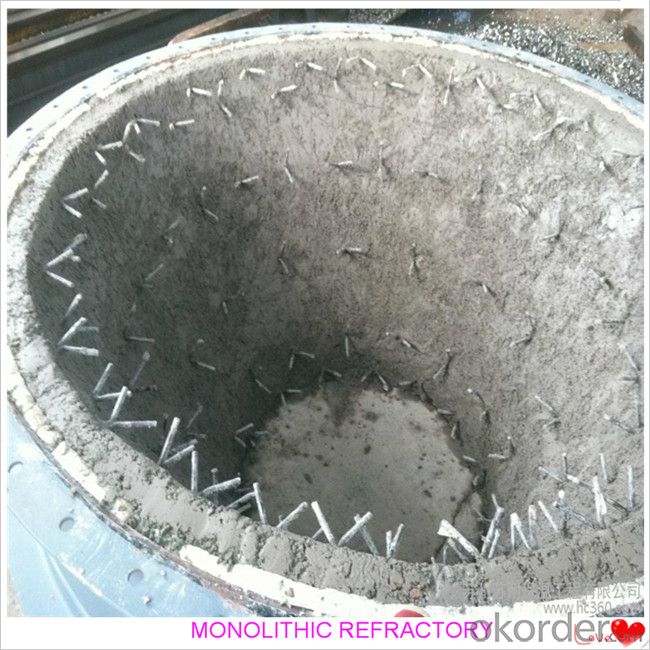
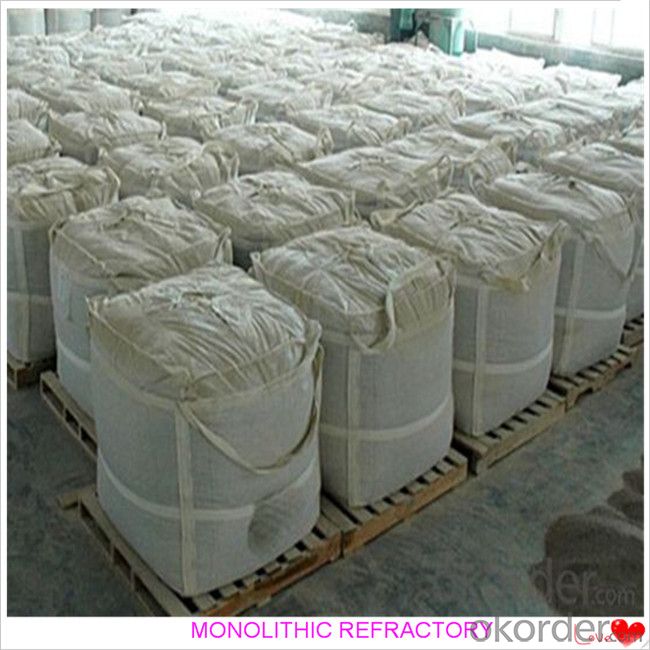
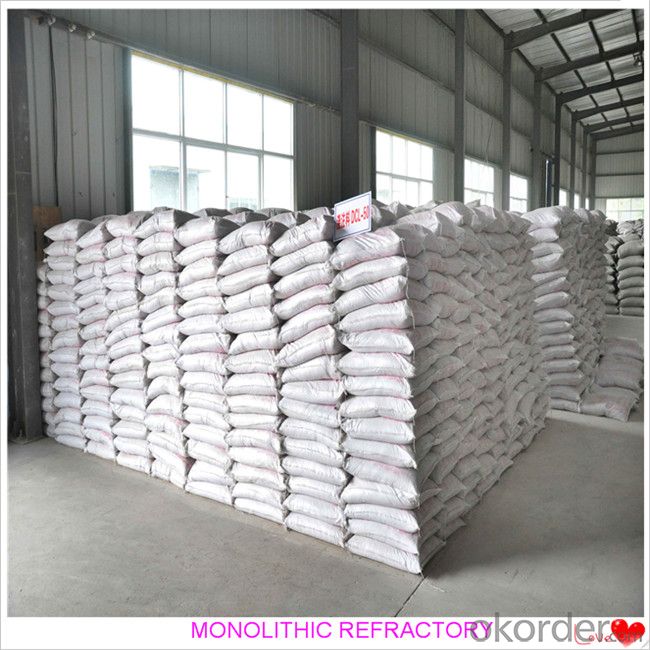
- Q:What are the advantages of using castables in the iron and steel industry?
- There are several advantages of using castables in the iron and steel industry. Firstly, castables offer excellent thermal shock resistance, allowing them to withstand sudden temperature changes during the manufacturing process. This helps to prevent cracking and prolongs the lifespan of the refractory lining. Secondly, castables provide high strength and abrasion resistance, making them suitable for withstanding the harsh conditions of iron and steel production. They can withstand the abrasive nature of molten metal and slag, ensuring long-lasting performance. Additionally, castables offer flexibility in terms of installation. They can be poured or gunned into place, allowing for easy and efficient lining of various shapes and sizes. This flexibility also helps in repairs and maintenance, as damaged areas can be easily patched up. Lastly, castables have good chemical resistance, enabling them to withstand the corrosive effects of molten metal and various metallurgical processes. This resistance helps to maintain the integrity of the refractory lining and ensures consistent production quality. Overall, the advantages of using castables in the iron and steel industry include thermal shock resistance, high strength, abrasion resistance, flexibility in installation, and chemical resistance. These properties contribute to improved efficiency, extended refractory life, and reduced downtime, ultimately benefiting the overall productivity of the industry.
- Q:What are the typical compositions of monolithic refractories?
- Typically, monolithic refractories consist of a combination of aggregates, binders, and additives. Aggregates, such as alumina, magnesia, or silicon carbide, provide the main refractory properties and are chosen based on the desired characteristics of the refractory, such as resistance to high temperatures, thermal shock, or chemical attack. To bind the aggregates together and give the refractory its shape and strength, binders are used. Common binders include clay, calcium aluminate cement, or colloidal silica. The binder also impacts the overall performance of the refractory, affecting properties like thermal conductivity and chemical resistance. Additives are often included in the composition of monolithic refractories to improve specific properties or facilitate the processing. These additives can be plasticizers, which enhance workability and make installation easier, or antioxidants, which enhance the refractory's resistance to oxidation. Ultimately, the specific composition of a monolithic refractory can vary depending on the intended application and desired performance characteristics. Different combinations of aggregates, binders, and additives can be customized to meet specific temperature ranges, chemical environments, or mechanical stresses.
- Q:What types of monolithic refractories are commonly used in the iron and steel industry?
- Commonly used monolithic refractories in the iron and steel industry include castables, gunning mixes, and ramming mixes.
- Q:Can monolithic refractories be used for the lining of ladle refining furnaces and VOD converters?
- Yes, monolithic refractories can be used for the lining of ladle refining furnaces and VOD converters. Monolithic refractories are versatile and can be shaped and installed easily, making them suitable for lining various types of furnaces and converters, including ladle refining furnaces and VOD converters.
- Q:How are monolithic refractories manufactured?
- Monolithic refractories are manufactured using a specific process that involves several steps. The first step is the selection and preparation of raw materials. These raw materials usually include aggregates, binders, and additives. Aggregates are chosen based on their chemical and physical properties, while binders are used to hold the aggregates together. Additives are included to enhance specific properties of the refractory material. Once the raw materials are selected, they are mixed together in precise proportions to create a homogeneous mixture. This mixture is then blended using various techniques such as dry or wet mixing, depending on the desired characteristics of the final product. After blending, the next step is shaping the refractory material. This can be done through several methods such as casting, gunning, ramming, or spraying. Each method is chosen based on the specific application and requirements of the refractory. Once the refractory material is shaped, it undergoes a curing process. This process involves drying the material at a controlled temperature to remove any excess moisture and allow for the development of desired properties. Finally, the cured refractory material is fired in a kiln at high temperatures. This firing process helps to further strengthen the refractory and enhance its resistance to heat and other harsh conditions. Overall, the manufacturing of monolithic refractories involves careful selection and preparation of raw materials, precise blending, shaping, curing, and firing processes. This ensures the production of high-quality refractory materials that can withstand the extreme conditions found in various industrial applications.
- Q:What are the key considerations when selecting monolithic refractories for tundish applications?
- When selecting monolithic refractories for tundish applications, the key considerations include thermal stability, erosion and corrosion resistance, thermal shock resistance, ease of installation and maintenance, and cost-effectiveness.
- Q:What are the cost implications of using monolithic refractories in the iron and steel industry?
- The cost implications of using monolithic refractories in the iron and steel industry can be both positive and negative. On the positive side, monolithic refractories are often more cost-effective in terms of installation and maintenance compared to traditional brick refractories. They can be easily applied and repaired, reducing downtime and labor costs. Additionally, monolithic refractories have better thermal efficiency, leading to energy savings and lower operating costs. However, there are also potential drawbacks to consider. Monolithic refractories may have a higher initial material cost compared to bricks. They can be more susceptible to chemical attacks and erosion, requiring more frequent replacements. The selection and installation of monolithic refractories also require specialized expertise, which can increase costs if not managed properly. Overall, the cost implications of using monolithic refractories in the iron and steel industry depend on various factors such as the specific application, maintenance practices, and expertise available. Proper evaluation and decision-making are crucial to ensure the best balance between initial investment and long-term cost savings.
- Q:How do monolithic refractories improve the performance of ladles and tundishes?
- The performance of ladles and tundishes is significantly improved by monolithic refractories in various ways. Firstly, these vessels are thermally insulated by monolithic refractories, which act as a barrier against heat loss and help maintain the desired temperature. This insulation reduces energy consumption and minimizes heat loss. Secondly, monolithic refractories offer excellent resistance to chemical corrosion and erosion. When ladles and tundishes come into contact with molten metal and fluxes, they can be severely corroded and eroded. However, the use of monolithic refractories protects against chemical attacks and extends the lifespan of these vessels. This saves costs associated with frequent repairs or replacements and ensures their integrity and safety. Furthermore, monolithic refractories provide superior mechanical strength and structural stability. Ladles and tundishes must withstand the weight of molten metal and the stresses caused during pouring and handling. With high mechanical strength, monolithic refractories can withstand these loads, maintaining their shape and integrity. This reduces downtime and increases productivity in the steelmaking process. Moreover, monolithic refractories offer flexibility in design and installation. They can be shaped and applied in various configurations, allowing customization to meet the specific requirements of ladles and tundishes. This flexibility ensures a better fit and improves the overall efficiency of the refractories, ultimately enhancing the performance of the vessels. In conclusion, monolithic refractories enhance the performance of ladles and tundishes by providing improved thermal insulation, resistance to chemical corrosion and erosion, increased mechanical strength, and flexibility in design and installation. These benefits contribute to the longevity, efficiency, and cost-effectiveness of ladles and tundishes in steelmaking operations.
- Q:What are the different types of monolithic refractories used in the iron and steel industry?
- In the iron and steel industry, several types of monolithic refractories are used due to their excellent thermal resistance, high strength, and durability. These refractories are essential in various applications to withstand extreme temperatures and harsh conditions. The different types of monolithic refractories commonly used in the iron and steel industry include: 1. Castables: These are precast refractory materials that are mixed with water to form a slurry, which is then poured or cast into molds. Castables are widely used in iron and steel industries for lining ladles, tundishes, and other furnaces due to their high strength and excellent resistance to thermal shock. 2. Ramming Mass: Ramming mass is a refractory material that is used for lining induction furnaces and other melting units. It is made up of refractory aggregates, binders, and additives. Ramming mass is applied by ramming or tamping it into place, forming a dense lining that can withstand high temperatures and chemical attacks. 3. Gunning Mix: Gunning mix is a refractory material that is applied using a pneumatic gunning machine. It is used for repairing or lining various areas of furnaces and is particularly useful for hot repairs. Gunning mix consists of refractory aggregates, binders, and additives, which are sprayed onto the lining surface and then compacted. 4. Plastic Refractories: Plastic refractories are mixtures of refractory aggregates and binders that have a high plasticity and can be easily molded or shaped. They are used for repairing or patching refractory linings in iron and steel industries. Plastic refractories are typically applied by hand or using a trowel and are suitable for both hot and cold applications. 5. Mortars: Refractory mortars are used for jointing or repairing refractory bricks or other monolithic refractories. They are made up of refractory powders, binders, and water. Mortars provide excellent adhesion between bricks or monolithic materials, ensuring a strong and durable lining in furnaces, ladles, and other high-temperature equipment. These different types of monolithic refractories play a vital role in the iron and steel industry by providing reliable and long-lasting linings, ensuring efficient operations and minimizing downtime.
- Q:How do monolithic refractories contribute to reducing downtime in iron and steel plants?
- Monolithic refractories play a crucial role in reducing downtime in iron and steel plants by offering several key advantages over traditional brick refractories. Firstly, monolithic refractories are highly versatile and can be easily molded and installed, allowing for quicker repairs and replacements. Unlike brick refractories that require time-consuming and labor-intensive processes, such as bricklaying and mortar application, monolithic materials can be directly applied in a castable or gunning form, significantly reducing the downtime required for repairs. Additionally, monolithic refractories provide better thermal insulation and improved resistance to thermal shocks, which are common occurrences in iron and steel plants. This enhanced thermal performance helps to maintain stable operating temperatures and prevents sudden temperature fluctuations that can lead to refractory failure and subsequent downtime. By minimizing these thermal shocks, monolithic refractories increase the overall lifespan of the refractory lining, reducing the need for frequent repairs and replacements. Furthermore, monolithic refractories offer superior chemical resistance compared to traditional brick refractories. Iron and steel plants often encounter aggressive chemical environments due to the presence of molten metal, slag, and other corrosive substances. Monolithic refractories are specifically designed to withstand these harsh conditions, preventing chemical attacks and erosion of the refractory lining. As a result, the need for unscheduled shutdowns due to refractory degradation is significantly reduced. Lastly, monolithic refractories provide better dimensional stability, minimizing the risk of cracks and spalling that can occur due to thermal cycling and mechanical stress. This increased resistance to wear and tear ensures that the refractory lining remains intact for a longer period, reducing the frequency of maintenance and enhancing the overall operational efficiency of the iron and steel plant. In summary, monolithic refractories contribute to reducing downtime in iron and steel plants by offering faster installation, improved thermal insulation, superior chemical resistance, and enhanced dimensional stability. Their versatility and performance advantages make them a reliable choice for maintaining a reliable and efficient refractory lining, ultimately reducing the frequency and duration of plant shutdowns.
1. Manufacturer Overview |
|
|---|---|
| Location | |
| Year Established | |
| Annual Output Value | |
| Main Markets | |
| Company Certifications | |
2. Manufacturer Certificates |
|
|---|---|
| a) Certification Name | |
| Range | |
| Reference | |
| Validity Period | |
3. Manufacturer Capability |
|
|---|---|
| a)Trade Capacity | |
| Nearest Port | |
| Export Percentage | |
| No.of Employees in Trade Department | |
| Language Spoken: | |
| b)Factory Information | |
| Factory Size: | |
| No. of Production Lines | |
| Contract Manufacturing | |
| Product Price Range | |
Send your message to us
Low Weight Castable For Fireplace and Industrial Furnace in Iron and Steel
- Loading Port:
- China main port
- Payment Terms:
- TT OR LC
- Min Order Qty:
- 1000 kg
- Supply Capability:
- 3000000 kg/month
OKorder Service Pledge
OKorder Financial Service
Similar products
New products
Hot products
Related keywords
